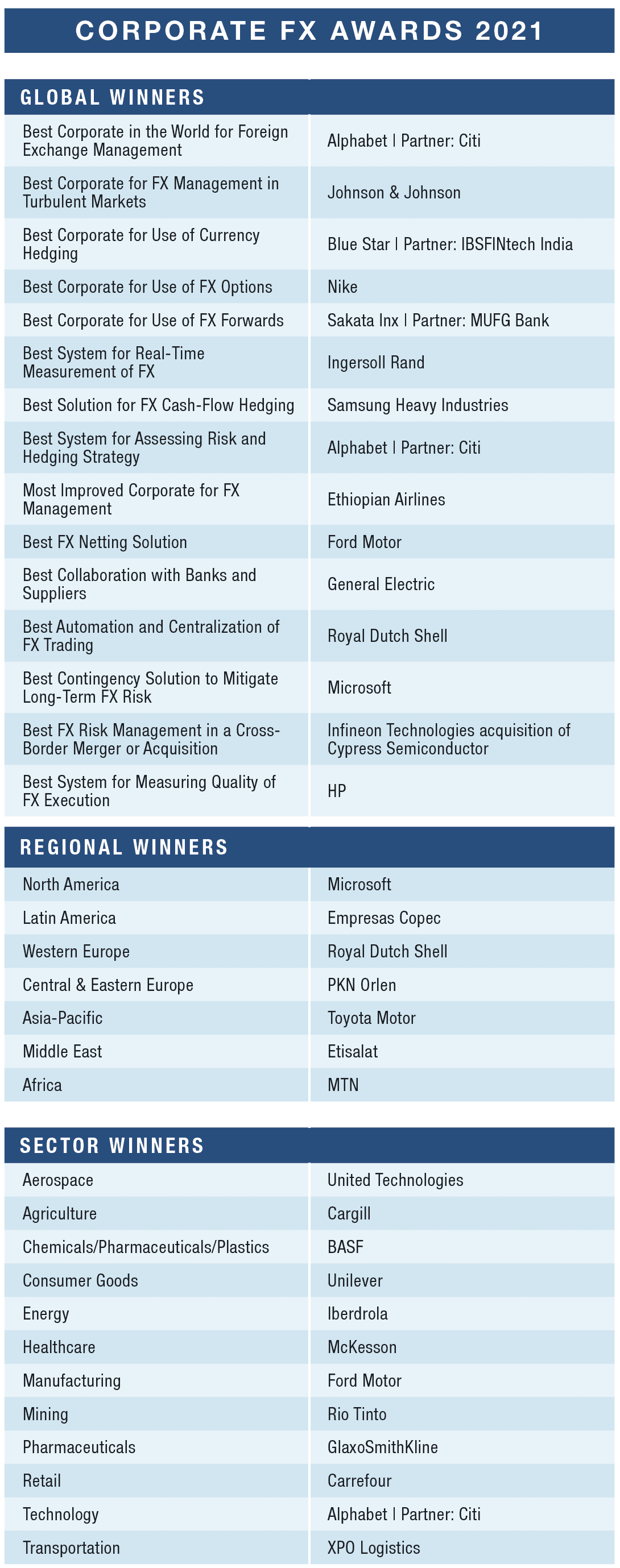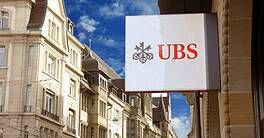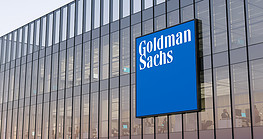A volatile currency environment is focusing attention on foreign exchange and day-to-day cash flow.

The global Covid-19 crisis has highlighted failings in foreign exchange risk management strategies as well as the importance of FX workflow automation, given that corporate treasurers are now largely working from home. To keep cash flow humming amid operational disruption and a global economic slowdown, treasury departments need to dig deep to provide real-time cash visibility and dynamic forecasting that enables strategic decision making. That means a greater investment in technology: something Global Finance’s 2021 Best Corporate FX winners have focused on intensely.
A report by Technavio, a UK research and advisory firm, projects that the global treasury and risk management software market size will grow at a compound annual growth rate of 5% through 2024, while according to a report by Fidelity National Information Services, two-thirds of treasury executives plan to increase their investment in digital treasury technology this year.
“FX is complex and not very well managed by companies,” says Jean-Luc Robert, CEO, Kyriba, a treasury software provider. “You need to be able to analyze your FX and come to a conclusion on what is your risk and exposure and how that impacts on your profit and loss and whether you need to protect your exposure by hedging.”
Given the strains the pandemic has created, day-to-day operations—including cash flow—is commanding more direct involvement from the board, underscoring the need for better FX analysis. “They are constantly requesting additional information from the CFO and treasurer,” says Robert, “such as ‘what will happen if our client doesn’t pay in time?’ or ‘what happens to our suppliers if we get disruptions?’ So there are a lot of simulations which are needed of the treasurer that they didn’t have before and there is an urgency to answering these questions.”
The impact on existing hedging programs, exchange rates, supply chains, customers and margins, not to mention profit-and-loss volatility and the very real possibility of bankruptcy, require deft and nimble solutions. To be proactive in their response to FX volatility, Robert says companies will need to better integrate FX within their treasury systems.
BEST CORPORATE IN THE WORLD FOR FX MANAGEMENT
Alphabet (Partner: Citi)
With its brands including the Google search engine, YouTube, Gmail, Google Cloud, Chrome and Android, Alphabet has enjoyed rapid growth, from $450 million in cash and investments on its balance sheet to $120 billion since its IPO 15 years ago.
To keep up with demands on its treasury operations, Alphabet has partnered with SAP to “co-innovate” solutions and re-engineer the function. Dubbed Project Emerald, the initiative has migrated treasury’s processes to an SAP treasury workstation, reengineering as many as 80 processes and automating about 90% of them end-to-end.
Alphabet’s new, customized treasury system went live in May 2019 and new functionality has been added since then. Improvements have included a dedicated trading app, where approved requests are split, netted or blocked before being forwarded electronically to the appropriate trading platform; automated intraday cash reconciliation; and offshore FX transactions that are automatically routed to bank portals when regulations require it. Alphabet’s treasury now automates nearly $1 trillion in cash flows from all Google entities, unlocking $1 billion of currently uninvested cash.
BEST CORPORATE FOR USE OF FX OPTIONS
Johnson & Johnson
Some 49% of Johnson & Johnson’s sales were logged outside the US in fiscal 2019; approximately 23% in Europe, 7% in the Western Hemisphere and 19% in Asia Pacific and Africa. J&J relies on regional treasury centers to balance the advantages of market proximity with its need for data and process standardization. To take advantage of low interest rates in 2020, the company ramped up cross-currency swap trades, using derivatives to increase returns on its cash and short-term securities investments.
BEST CORPORATE FOR USE OF CURRENCY HEDGING
Blue Star (Partner: IBS FINtech India)
An Indian air conditioning and commercial refrigeration company, Blue Star retained IBSFINtech last March to carry out an end-to-end automation of its treasury and trade finance operations. To protect margins amid market volatility, it adopted IBSFINtech’s comprehensive treasury, risk and trade finance management solution, which handles both hedge and trade books, in November 2019.
Blue Star has devised a hedge policy that aims to prevent surprises and manage the flow of the business cycle. For letters of credit (LCs), treasury sets trigger point stop-losses in specific currencies. All bills under the LC are hedged with a predefined date before maturity if the stop-loss hasn’t been hit.
BEST CORPORATE FOR USE OF FX OPTIONS
Nike
Nike uses forward and option contracts to hedge anticipated transactions and commitments. The sportswear multinational also monitors the value-at-risk of its foreign currency forward and options derivative instruments. Chatham Financial provides regression analysis that enables Nike to hedge more exposure economically while maintaining hedge accounting, thus allowing an increase in the overall hedge percentage while mitigating a greater level of risk.
BEST CORPORATE FOR USE OF FX FORWARDS
Sakata Inx (Partner: MUFG)
Sakata Inx (SAI), which manufactures printing inks, equipment and related materials for the flexible packaging and publishing industries, has a presence in 18 countries. Importing key raw materials from suppliers across the globe leaves SAI prone to FX risk exposure, particularly in Japan as there is no rupee/yen cross-currency exchange rate. That means SAI must use a US dollar reference rate for all yen exposures
To mitigate the currency risk, SAI uses plain-vanilla FX forward transactions, which have generated FX income amounting to 5.5%-8.9% of total profit over the past three years.
BEST SYSTEM FOR REAL-TIME MANAGEMENT OF FOREIGN EXCHANGE EXPOSURE
Trane Technologies
Headquartered in Ireland, Trane Technologies, formerly Ingersoll Rand, reduced its FX risk by over 50% across 47 currencies in the first year after implementing Kyriba’s FX solution in 2018 to replace its legacy and largely manual processes. The new system provides greater visibility and quantification of the multinational manufacturer’s exposures, affording it 97% real-time visibility of group FX exposure. Previously, hedging was limited to known exposures such as intercompany loans; consolidation tools provided functional currency or U.S. dollar transparency, but no transactional details.
BEST SOLUTION FOR FX CASH-FLOW HEDGING
Samsung Heavy Industries
With each new shipbuilding contract, Samsung Heavy Industries (SHI) stipulates the currency of payment, allowing it to forecast cash flow by currency at the point of signing. With these cash flow forecasts, the South Korean shipbuilder can determine its long and short FX positions by currency, then write appropriate buy and sell forward contracts. That means at the point of contract signing, profit-margin targets are fixed and FX volatility risk removed.
BEST SYSTEM FOR ASSESSING FX RISK AND HEDGING STRATEGY
Alphabet
Alphabet’s FX risk management program manages FX exposures in 219 countries and territories. The company takes an enterprise-wide risk view, using elements of both a systematic and flexible hedging approach. This includes a trio of layers–strategic, tactical and systematic–designed to achieve specific risk management objectives.
The tactical layer, in collaboration with Citi, enables treasury to make tactical adjustments to FX hedging, depending on business and market conditions. To ensure the quality and consistency of Alphabet’s hedging decisions, Citi implemented a scorecard based on a selected number of risk drivers; these serve as the input into a decision-making algorithm.
The data, situated on Citi’s Velocity Clarity platform, covers 28 currencies with 12 risk drivers each; the algorithm standardizes the data and calculates each currency’s rank based on an adjusted average of its scores. The rank indicator can be calculated for any currency combination.
MOST IMPROVED CORPORATE FOREIGN EXCHANGE MANAGEMENT
Ethiopian Airlines
Africa’s largest and most consistently profitable carrier, Ethiopian Airlines posted strong half-year financial returns, reporting a $260 million in profit for the 2019-2020 year. Given that it operates in 40 African markets, many with their own currencies, plus others outside the continent, Ethiopian is exposed to huge foreign currency risk, exasperated by an inability to repatriate funds due to regulatory restrictions. Risk management tools the airline employs include natural hedging, currency pooling, dollar-indexed bond purchases, treasury bill purchases, forward contracts and currency swaps.
BEST FX NETTING SOLUTION
Ford Motor
As a dollar-based company with a global manufacturing footprint, Ford Motor uses Cash Flow-at-Risk (CFaR) to measure and manage its negative commodity and currency risk trade-offs. Higher net pricing allows Ford to offset losses in one position with gains in another: a particularly important capability when market activity is high. The UK is Ford’s biggest European market and uncertainty and volatility precipitated by Brexit have put downward pressure on sterling, impacting Ford. Using Reval’s Treasury and Risk Management cloud-based solution, the automaker has been able to design its response to events such as Brexit by simulating the impact on derivatives and across asset classes when currencies and interest rates move a certain way.
BEST COLLABORATION WITH BANKS AND SUPPLIERS
General Electric
General Electric’s business portfolio is narrower than it was during the Jack Welch era; but it still includes aviation, health care, power and renewable energy. One of the initial 10 multinationals, along with 12 banks, that participated in the Swift gpi for Corporates pilot, testing the functionality of its treasury system, GE is also partnering with Swift and FIS to pilot Swift’s Inbound Tracking proof of concept, which is designed to let corporates track inbound payments while providing greater visibility on collections and enabling better forecasting.
To simplify transactional FX and payments, Citi designed and implemented a comprehensive multicountry, multicurrency transactional FX solution for GE, which also uses FIS’s Trax payment hub to centralize and streamline global payments and reporting operations across more than 135 countries.
BEST AUTOMATION AND CENTRALIZATION OF FX TRADING
Royal Dutch Shell
Two years ago, Royal Dutch Shell announced a new central treasury system that would connect its head office to its shared service centers and 718 operating units in 22 countries. Built by Bloomberg in collaboration with Shell, it utilizes the Bloomberg Terminal system for automated execution and risk mitigation and Bloomberg’s multibank FX electronic trading platform, FXGO.
The new system allows small or urgent transactions to be automated completely, with the option of treasury intervention if required.
BEST CONTINGENCY SOLUTION TO MITIGATE LONG-TERM FX RISK
Microsoft
Microsoft maintains 1,300 subsidiary bank accounts associated with 85 banking relationships worldwide. To help mitigate current and future risks, the software giant’s treasury has implemented technical and operational solutions to ensure local accounts and finance staff have timely information about any political, economic or environmental crisis.
To reduce liquidity risk in these local bank accounts, which it set up in high-risk countries for tax and payroll payment purposes, Microsoft has added a second layer to its existing zero-balance account structure with Citi whereby cash is automatically swept out of these accounts and into the corporate zero balance account structure every day.
BEST FX RISK MANAGEMENT IN A CROSS-BORDER MERGER OR ACQUISITION
Infineon Technologies acquisition of Cypress Semiconductor
Currency fluctuation is executives’ top consideration in cross-border M&A. Last April, Infineon Technologies completed the €9 billion ($11 billion) acquisition of Cypress Semiconductor, making Infineon the biggest semiconductor supplier to the automotive industry. In order to hedge the foreign currency risks arising from the acquisition, a transaction-dependent euro/US dollar foreign currency forward (deal contingent forward) and a transaction-dependent euro/US dollar foreign currency option (deal contingent option) were concluded and accounted for as cash flow hedges.
To facilitate planned future refinancing measures, Infineon partially hedged against the risk of rising interest rates with transaction-dependent interest rate hedges (deal contingent forward starting interest rate swaps) in December 2019 with a total nominal volume of €2.01 million and $750 million, which were accounted for as cash flow hedges. Changes in the market price from the transaction price will be recognized in the profit or loss over the term of the hedges until the date of the planned refinancing measures.
BEST SYSTEM FOR MEASURING QUALITY OF FX EXECUTION
HP
Since demerging five years ago, HP has turned to digitization to transform its treasury. The upgrade includes implementation of the SAP HANA database management system, including APIs exchanging and consuming information; a new treasury management system and greater use of robotics and analytics. HP is leveraging the latter to automate routine treasury processes, create common analytical reports and assist with future state analytics, including bots to run such tasks as balance sheet hedging, FX processing and cash flow gain/loss reporting. HP has also implemented Swift for Corporates for a real-time, end-to-end view of cross-border payment flows.
HP uses forward contracts, interest rate and total return swaps, treasury rate locks and, at times, option contracts to hedge foreign currency interest rates and return on certain investment exposures. Derivatives offset business FX exposure and interest rate risk on expected future cash flows and on some existing assets and liabilities.
AFRICA
MTN
South Africa’s MTN is an emerging-market mobile operator serving 233 million customers across 21 operations. With a market capitalization of 123.3 billion South African Rands ($8.3 billion) at the end of December, MTN expects to double its profit in the half-year through end-June, buoyed by foreign exchange gains.
Headline earnings per share are expected to rise 100% from 195 cents to 390 cents for the six months ended last June compared with the previous corresponding six-month period.
FX gains on nonoperational items such as adoption of the new IFRS 16 leasing standard, which resulted in a material increase in assets and liabilities, have played a major role in MTN’s success, but it continues to stress-test its 2019–2021 business plan against currency volatility.
Asia Pacific
Toyota Motor
As part of its environmental, social and governance commitments, Toyota Motor offered the first-ever US corporate green bond earlier this year. Toyota is borrowing $2.5 billion through its finance company, Toyota Motor Credit Corporation, to fund the sale of clean cars.
Toyota has also been one of the first corporations to transition from Libor (London Interbank Offered Rate) to the new SOFR (Secured Overnight Financing Rate) to provide liquidity and cost-effective funding to its customers and dealers. SOFR is a “secured” interest rate index, meaning that unlike Libor, it has no credit risk component.
CENTRAL AND EASTERN EUROPE
PKN Orlen
Poland’s biggest oil refiner, PKN Orlen processes crude oil, fuel, petrochemical and chemical products along with its wholesale and retail operations. Higher trading margins in wholesale and retail as well as a successful hedging strategy have helped PKN to weather the decline in crude oil prices and lower demand for its products that have accompanied the Covid pandemic.
PKN’s net position in valuation and settlement of derivative financial instruments amounted to 128 million Polish zloty ($34.6 million) and 75 million zloty, respectively. Most of this activity related to hedging the risk of shifts in exchange rates on payment of invoices in foreign currency, the currency hedge for liquidity transactions and interest-rate hedging, including payment of interest on bonds.
LATIN AMERICA
Empresas Copec
Empresas Copec is a Chilean holding company, with subsidiaries in energy and natural resources, whose operations are structured into four business sectors: forestry, fuels, fishing and other investments. It
issued the first sustainable bonds in Chile and Latin America in October 2019 via its Arauco forestry unit, raising $1 billion.
Empresas Copec uses three types of derivative instruments related to FX exposures: fair-value hedges for recognized liabilities, hedges for specific risks associated with a recognized liability or highly probable forecast transaction and hedges for net investment in a foreign operation.
MIDDLE EAST
Etisalat
A telecommunications services provider based in the United Arab Emirates, Etisalat uses FIS’s Quantum cloud-hosted treasury management solution to automate and manage all of its investments. All financing and risk management deals are performed and automated in Quantum. The recent integration of Quantum with Bloomberg ensures that all FX transactions executed through Bloomberg are automatically sent to and recorded in the system, providing Etisalat with visibility across all of its risk exposures.
NORTH AMERICA
Microsoft
As no standard treasury tool met its needs, Microsoft has used its own software, cloud platforms and tools, including the Power BI visualization/analytics software tool, to transform its treasury operations. With Microsoft Azure cloud technology, the treasury team accesses real time data that helps it realize cost savings and efficiencies.
Microsoft is also deploying machine learning to better forecast cash balances and currency exposures, and chatbots to eliminate manual data searches.
WESTERN EUROPE
Royal Dutch Shell
Shell manages over 30,000 FX requests a year covering nearly $1 trillion in total spots, forwards and swaps flow across 40 currencies. The oil and gas giant has extended FXGO, Bloomberg’s FX electronic trading platform, to create a portal that allows subsidiaries to send orders to central treasury, which then either aggregates or nets exposures and selects the appropriate execution strategy.
AEROSPACE
United Technologies
United Technologies Corporation was a US multinational conglomerate that merged with the Raytheon Company last April to form Raytheon Technologies.
The prior year, to support a corporate split into three separate entities, United Technologies turned to Serrala to implement a treasury separation project that “cloned and cleansed” its SAP software systems. New features included inputs from Reuters for FX exchange rates, FX forward rates, interest rates, equity prices and commodity prices and other third-party links for FX trading, spots, forwards/swaps, trade confirmations and trade repository. Using a rapid, phased approach, the company set up three new independent treasury operations with secure data management to accelerate finance transformation in all areas of treasury, including exposure and hedge management.
AGRICULTURE
Cargill
A US-headquartered global food corporation, Cargill has a reputation for strength and stability in customized FX hedging and creates its own currency-translated solutions, allowing it to hedge commodity and currency risk simultaneously in a single instrument. Cargill applies its solutions across more than 70 commodities markets and 24 currencies.
CHEMICALS/PHARMACEUTICALS/PLASTICS
BASF
The largest chemical producer in the world, BASF takes a regional, decentralized approach to exposure reporting but applies a streamlined, automated and universal FX management process across every region. BASF uses Kyriba’s FiREapps automated FX risk transfer tool to analyze its subsidiaries’ FX risk positions and automatically generate hedge transactions that transfer risk from the sub to the parent company.
CONSUMER GOODS
Unilever
With hundreds of banking relationships across subsidiaries, continents and time zones, the UK-Dutch consumer goods multinational was an early adopter of J.P. Morgan’s Insight API solution, which gives Unilever access to real-time information on all of its accounts, facilitating accurate cash management decisions.
Live banking data helps Unilever reduce risk when forecasting, enabling it to make more effective, timely FX trades.
ENERGY
Iberdrola
For the first nine months of 2020, Iberdrola, a Spanish renewable energy company, reported financial results totaling €641 million ($784 million), up 28% from the same period in 2019. The company remained profitable amid the Covid-19 crisis thanks to a combination of ready cash, multibillion-euro investments, price hedging, regulated networks business and capital gains. Gains on derivatives and other activities rose by €181 million, due largely to the effect of exchange rate hedges, which Iberdola offset in other profit and loss categories.
HEALTH CARE
McKesson
McKesson is pursuing a multiyear strategic growth initiative aimed at making it more efficient and agile across key operational areas including information technology, finance and human resources. On the FX front, the US drug wholesaler and distributor relies on exchange-rate risk programs that use foreign currency forward contracts and cross-currency swaps to reduce the impact of foreign exchange fluctuations on the income statement, and as cash flow hedges.
MANUFACTURING
Ford Motor
Ford prioritized financial flexibility last year, including for its Central Treasury Operations, which primarily engage in decision-making for investments, risk management activities and financing. To automate and help streamline global finance and purchasing processes, Ford recently implemented SAP S/4HANA, which runs automatically in real time and provides more accurate liquidity assignments.
MINING
Rio Tinto
Giant Anglo-Australian mining group Rio Tinto relocated its core treasury activities, including FX and interest rate execution, cash management and investments, from London to Singapore in 2016 and upgraded its treasury management system to run SAP in Microsoft Azure. This enables the company to quickly respond to pricing volatility in commodities and exchange rates.
PHARMACEUTICALS
GlaxoSmithKline
The UK pharmaceutical manufacturer uses algorithmic FX trading to reduce execution costs and minimize market impact. The system provides access to a wider liquidity pool while reducing time spent per deal thanks to its ability to analyze large amounts of data needed to conduct price discovery and identify optimal liquidity.
RETAIL
Carrefour
The French supermarket chain operates in 30 countries and is undergoing a significant digital transformation aimed at mining data for real-time insights into its bank balances and currency exposures. To this end, Carrefour runs SAP on Google Cloud with full data centralization. It is currently implementing SAP’s Treasury Management System in several countries, including setting up Swift connections, to achieve real-time cash visibility, improve liquidity and lower risks.
TECHNOLOGY
Alphabet (Partner: Citi)
Google’s parent company recognized the need to reengineer its treasury function to support its rapid growth. In 2019, partnering with SAP, Alphabet launched Project Emerald, a state-of-the-art, noncustom solution that migrated treasury’s processes to Alphabet’s SAP treasury workstation. The success of the treasury makeover has paved the way for Alphabet to implement SAP as a single global ERP system for all corporate functions as well.
TRANSPORTATION
XPO Logistics
XPO is a top-ten global logistics company with about $17 billion in 2019 revenue and an integrated network of people, technology and physical assets. The US-based company recently expanded its global shared services and optimized finance processes and systems, including free cash flow generation, helped by FX and interest rate hedging programs.




